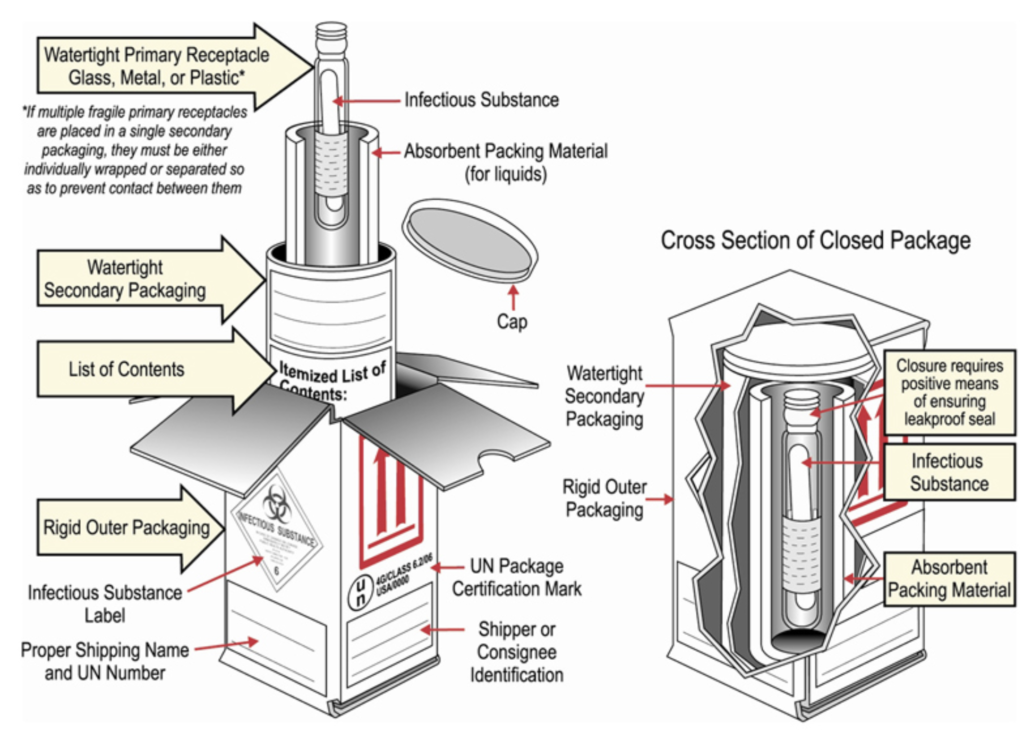Preparedness. Response. Collaboration.
Package and shipping of infectious agents is a critical component of the laboratory testing process.
It is crucial to understand the difference between Category A and Category B shipments. The Department of Transportation (DOT) and International Air Transport Association (IATA) have strict requirements for shipping laboratory specimens to ensure safety during transport.

Category A
What is a Category A Infectious Substance?
A Category A substance is an infectious substance that is transported in a form that, when exposure to it occurs, is capable of causing permanent disability, or a life-threatening or fatal disease in otherwise healthy humans or animals.
Infectious substances meeting these criteria that cause disease in humans or both in humans and animals must be assigned to UN 2814. Infectious substances that cause disease only in animals must be assigned to UN 2900. These are classified under IATA Hazard Class 6.2 and IATA Packing Instruction 602.
Assignment to Category A and the proper shipping name, ‘Infectious substances, affecting humans’ or ‘Infectious substances, affecting animals’, must be based on the known medical history and symptoms of the source human or animal, endemic local conditions, or professional judgment concerning individual circumstances of the source human or animal.
Category B
What is a Category B Infectious Substance?
A Category B substance is an infectious substance that does not meet the criteria for inclusion in Category A. Infectious substances in Category B must be assigned to UN 3373, and their proper shipping name is ‘Biological Substances, Category B’.
Human or animal material including but not limited to excreta, secreta, blood and its components, tissue and tissue fluids, and body parts, being transported for purposes such as research, diagnosis, investigational activities, disease treatment and prevention, are assigned to UN 3373. These are classified under IATA Hazard Class 6.2 and IATA Packing Instruction 650.

